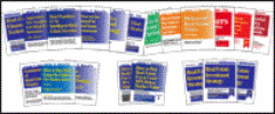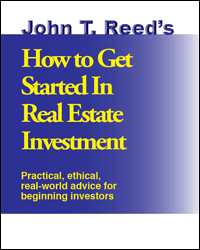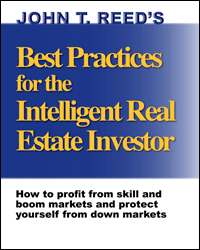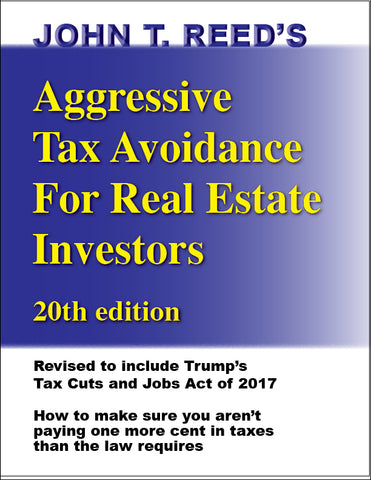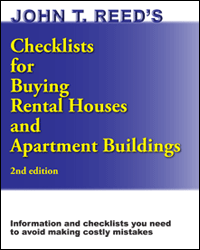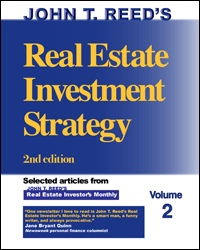
Real Estate Investment Strategy, Volume 2, 2nd ed.
One of my readers told me he re-reads Real Estate Investment Strategy every year. Volume 2 is now in its 2nd edition. Topics include:
- What if values don't always go up?
- A way to get out of real estate tax-free
- Divorce and real estate
- Opportunities and hazards in wetlands
- We can't all be contrarians
I've added 10 new chapters to Volume 2 of Real Estate Investment Strategy.
New chapters
- Outappraising the market
- Can you spot hot markets in advance?
- Finding value by using a sharper pencil
- Hedging real estate
- NAFTA and real estate
- Natural disasters and real estate
- Nonconforming uses
- Craigslist.org
- Short sales and taxes
- Political violence and your real estate
See the table of contents for a list of all 52 chapters.
Outappraising the market
Outappraising the market is, in one phrase, the essence of what active real estate investing is about. Active investing is making profits from real estate on purpose. Passive investing is about buying a property and hoping it goes up in value. You get bargain purchases (at least 20% below market value) or find properties with hidden upgrading potential when you can see value that the seller and other buyers cannot see. In other words, you appraise the property and its potential and situation better than all the other people who know about it. By outappraising them, you make far more profit than the average investor.
Finding value by using a sharper pencil
Certain details of a property can make a big but generally overlooked difference in operating expenses and value. For example, forced warm-air heat costs about half as much as hot water heat—because of greater fuel efficiency and smaller plumbing bills. Some towns have extraordinarily high or low property tax rates, thereby nullifying the usefulness of rules of thumb.
Other similar issues involve swimming pools, exterior lighting, landscaping, remaining life on expensive replacement items, wasted space in buildings, and more.
Hedging
You read a lot about hedging risk lately, but not much about hedging real estate risk. There are a number of ways to do it. You need to know what they are. If you own real estate, you probably lost about 20% to 25% of your property value in recent years. If you had competently hedged, you would not have lost that value.
Nonconforming uses
A great many investors own nonconforming uses. Those are properties that do not comply with current zoning but were grandfathered in. But did you know that your right to continue to operate such properties is not iron clad. In the event of damage or renovations, you may trigger a law requiring you to bring the entire properly into compliance with current zoning. In many, if not most, cases, that would mean tearing it down.
"One newsletter I love to read is John T. Reed's Real Estate Investor's Monthly. He's a smart man, a funny writer, and always provocative."
Jane Bryant Quinn, Newsweek personal finance columnist
Volume 1
Volume 3
The best of John T. Reed's newsletter articles on investment strategy have been put together in one book, over 50 articles.
94 pages, 8 1/2 x 11 paperback, $29.95
We Also Recommend

